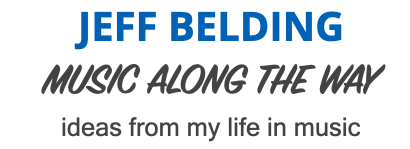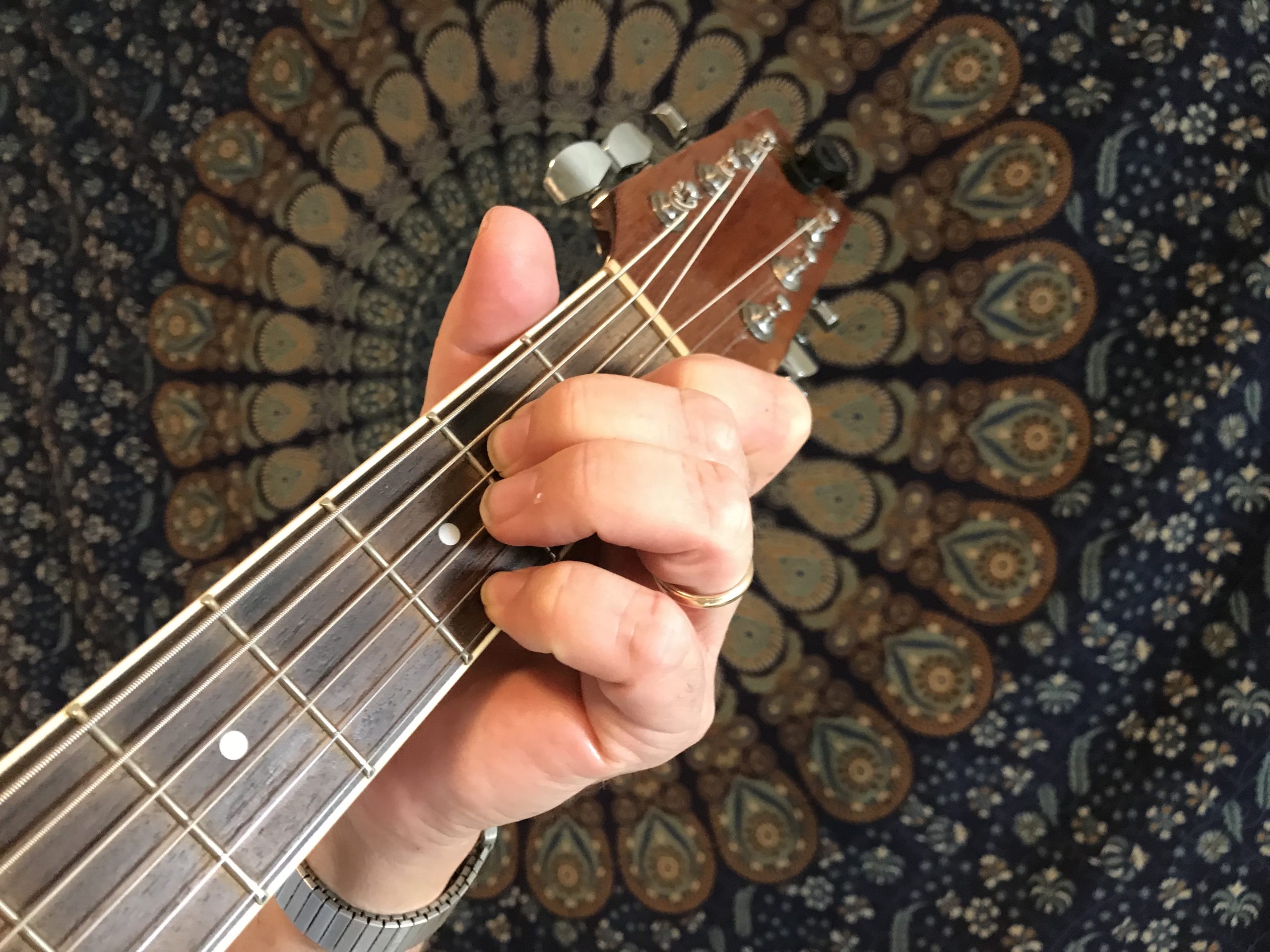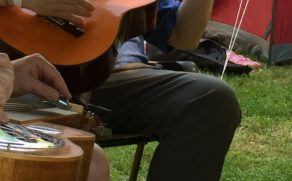
What should I practice today? What was I working on at my last practice? What should I start off with? If you have trouble answering any of these questions, you may not be motivated enough to bother practicing at all.
The best way to “sit down and get to work” is if you happen to be taking private lessons. Chances are, your instructor gave you an assignment to prepare and you would look “kinda foolish” if you made no effort to at least try and accomplish what was asked of you a week ago. If a lack of interest in practicing and preparing your instructor’s assignment starts to be a weekly pattern, then it should be obvious that these private lessons are not working out for you. Perhaps it’s time to try something “on your own” (Not that I am trying to belittle the usefulness and importance of private music instruction – Such a decision to “quit” should not be made lightly).
When I first started playing guitar, my parents hooked me up with an instructor very early on. Fortunately, he was a superb music teacher and very motivating. Practicing came easy! I couldn’t wait to show him the work I had done to prepare for my next lesson.
I was with my first guitar teacher for about two years. But, for many years after that (ages 12 to 40), I never took another private lesson on guitar. I was always studying music on other instruments such as trumpet, baritone horn and piano both privately and in public school and later in music school. But the guitar was just something that was always “around”, so the learning process in that realm was more “organic.”
Now, you might well ask, “How did you improve on guitar and get to new musical plateaus on that instrument with very little formal instruction?”
Here are some ideas that worked for me to keep me motivated to practice my guitar, thus gaining new musical skills without a teacher around. These can apply to any instrument. I hope these ideas can help you with keeping up a practice routine of your own:
Play music with others. Find a group or at least one other person that you can play music with. Preferably, someone at your ability level or maybe a little more knowledgable. Whether it’s a local bluegrass or rock band jam or just a duet with another person, make a weekly commitment to play music with others. This way, you have a built-in motivation for what to practice. Even if you don’t get to anything else, at least you have the music to work on for your weekly “ensemble” situation. I was fortunate in that I was always playing guitar in “some kind of band”, so I always had a part to prepare and new music to work on.
Learn and Practice Scales. I know it sounds cliche’ and even perhaps like a boring idea, but it is a valuable practice tool. Scales have a “trickle-down” effect on your subconscious. Playing them can help with your confidence level, and improve left and right hand coordination. This will lead to better playing technique in general. Here are some other “reasonable arguments” for practicing scales:
Understanding key centers – Don’t let it bother you if you can’t identify every note of a scale right away. The important thing, is to be able to identify the starting note, also known as the root or key center. Knowing that root note of a scale is important in the “real world” of improvisation.
Picking technique and bowing technique (for violin) With a flat pick, scales can be practiced in several ways. You can use all down strokes or even all up strokes. You can do alternation of down and up strokes. You can start with a down and alternate from there. Larry Coryell once suggested to start with an up-stroke and alternate from that point, the goal being to be in complete control of your picking hand. On the banjo, the alternating pick technique uses the Thumb as the down-stroke and the Index Finger as the up-stroke. Don Reno’s banjo playing incorporates this technique to great effect (listen to “Follow the Leader”, a Reno composition for banjo). Fiddle (or classical violin) players can try all down-up bow alternation. They can also try slurring two or or more notes at a time. The combination of possible bow stroke variations is almost unlimited!
Pattern Recognition – Recognizable patterns within a particular scale can come in the form of specific finger placements, or fretted distances between each successive note. Pentatonic scales (a scale of 5 notes) will give you a great workout. Some of the fingerings, especially the minor pentatonic scale pattern, are quite easy. I’ve provided examples of the pentatonic minor scale in “A” for several different instruments. These are available for FREE download from my store here: https://jeffbelding.com/store/ under Free Stuff.
When you practice any scale pay attention to the following:
What finger goes with what fret?
How many notes there are per-string?
What are the distances between the fingers of the fretting hand?
Is any “shifting” of the fretting hand is required?
(Note: Banjo players in particular do more shifting than a guitar, mandolin or fiddle. It’s just an inherent oddity of how the instrument is tuned and the unusual location of the highest-pitched string).
Understanding melodic and rhythmic phrasing ideas – Playing a scale up and down (lowest pitch to highest pitch and then reverse) can be a valuable exercise “technically”, but there are other “avenues” from which you can approach a scale. The melodic aspect of this idea is looking for smaller parts within the scale to form shorter melodic fragments.
Try playing the first three notes of a scale over and over four times in a row. This “3-note” or “triplet” pattern is widely used in Irish Jigs and in Jazz/Swing music. If you play notes “1, 2 and 3” followed by notes “2, 3 and 4”, and then “3 , 4 and 5”, etc., you come up with a nice “triplet” exercise that makes your previously “dry” scale start to sound like honest to goodness music! The free download examples show this as well – available here: https://jeffbelding.com/store/ but feel free to explore your own variations as well.
The final sample exercise in the free download https://jeffbelding.com/store/, is a Major scale in “C.” The fingering for this C Major scale is a little more challenging than the pentatonic finger pattern.
Guitarists should practice these various scales starting at different frets, but keeping the finger patterns intact. By doing so, you are playing these scales from a different root or key center. For example, if you start the pentatonic scale at the 7th fret (instead of the sample which starts at the 5th fret), you would now be playing a pentatonic scale in “B”. (instead of “A”). Unfortunately, the patterns for the other instruments are not movable because of the use of open strings.
Rhythmic variations is another way to spice up your “bland” scale. Using various combinations of quarter notes and eighth notes in four quarter time as you make your way up and down the scale gives you a new perspective beyond “straight up and down” with the same timing. One idea might be to pick the first note twice with a down-up pick motion in 8th notes, then play the second note once as a quarter note, and continuing up the scale in this manner. Just let your imagination take over, trying some of your own experimentations with rhythm. So, I suggest that you start each of your practice sessions with a couple of these scales and variations on them. It’s an easy way to get your practice session rolling.
Use Instructional Materials – Spend a part of your practice time with some portion or section of a “lesson on tape” (yeah I still call them “tapes”). It could be an instruction book that comes with a CD, DVD or is online. I have a great book with audio support in mind if you’re a beginning banjo player! https://jeffbelding.com/beginner-banjo-book/ You may also want to get ahold of “jam” or “back-up” tracks to practice soloing. There are unlimited possibilities on Youtube.
In my 38 year gap without “traditional” private guitar instruction, I relied on a multitude of guitar instruction material including Guitar Player and Frets magazines. But one company that helped me reach new plateaus, was “Homespun Music Instruction” founded by singer/guitarist Happy Traum, a native of Woodstock, NY. These lessons were monumental in adding to my knowledge as both an instrumentalist and musician in general. Here’s a link: https://www.homespun.com
How long should I practice?
Between practicing some scales, working on music for your next jam get-together, and then working with some form of guided instruction, you’ve probably used up a solid hour of practice time.
I myself find that after an hour of practice, I like to take a break. That hour may be all the time that I get in for that day. But not to worry – if an hour a day is all you can handle or find the time for, you will make steady progress in keeping such a schedule.
If you come back later that day and take on another hour, then so much the better. If you want to be the next Tony Rice or Bryan Sutton on guitar or Alan Munde or Allison Brown on the banjo, then try to get in three hours a day (or more) but try to keep it in increments of an hour at a time. Your concentration will be better and you will give sore muscles time to heal between those hour sessions.
In my next post on this topic, I will give you some more practice suggestions that are highly effective, but a little more “unusual” in their approach.
In the meantime, have you practiced yet today?!?



